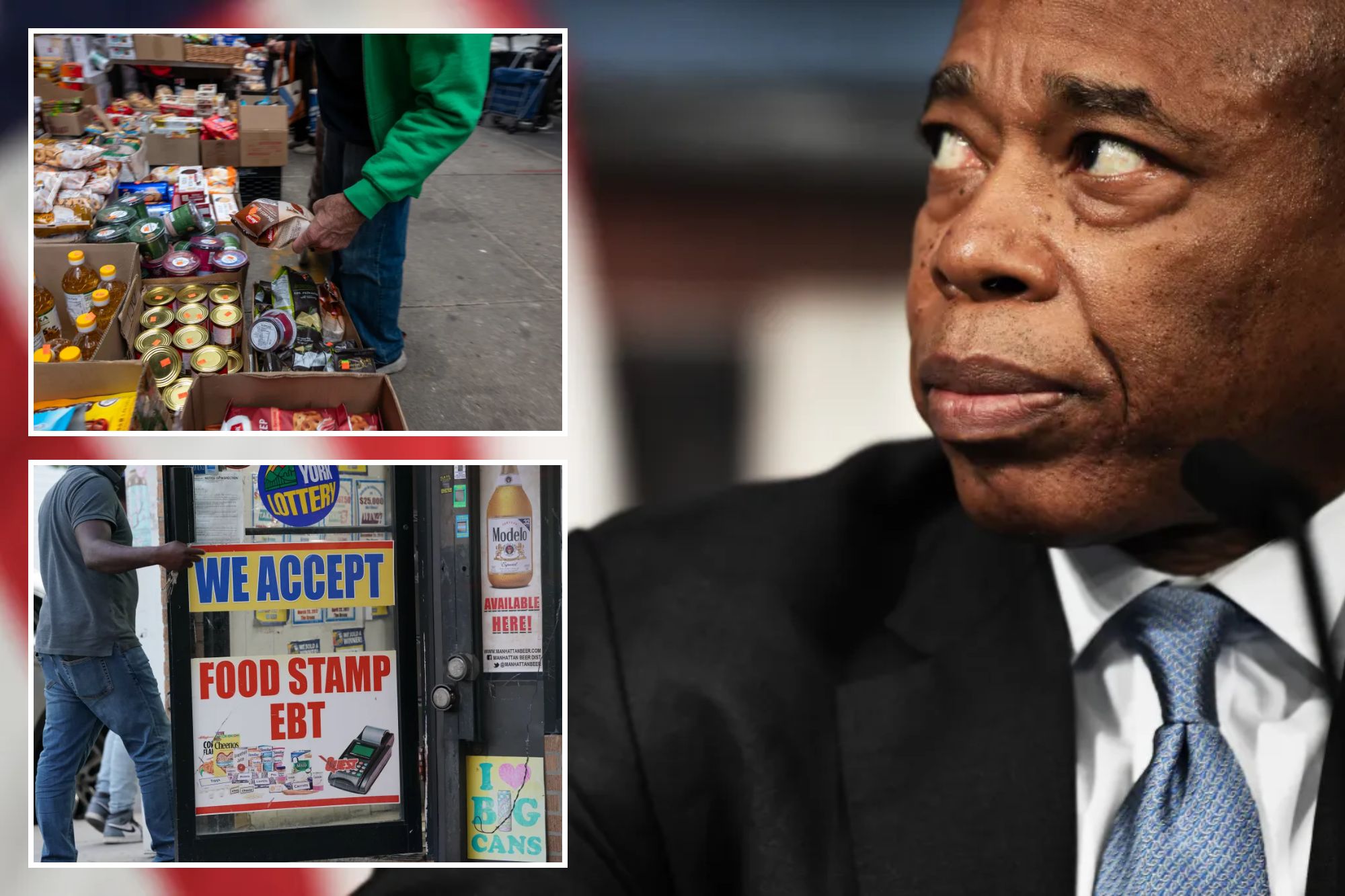
New York City provided 720,765 residents cash assistance last year — the most it’s ever awarded in welfare checks in at least a decade.
To handle the surge, a staggering $2.46 billion in federal, state and city funds was budgeted by Mayor Adams this year to provide cash assistance to adults unable to work or pay their bills and for their children. The city previously budgeted $1.99 billion during the fiscal year that ended June 30, and $1.57 billion in fiscal 2022.
The biweekly checks are used for rent, utility costs and purchasing clothing or other necessities.
The number of New Yorkers getting handouts is 17% more than the 614,402 recipients in 2022 during Adams’ first year in office, and 30% more than the 555,311 in 2021 during Bill de Blasio’s final year in office, an examination of city records by The Post shows.
The stunning tally is the highest since at least 2014, when the city’s Department of Social Services began tracking recurring and emergency payments by year.
In December alone, 499,552 residents collected welfare checks — an 11% increase from the same period a year earlier — and the most NYC has seen in a single month since parts of 2000, when it averaged about 572,100 cash-assistance recipients monthly.
“You’d have to go back to the 9/11 era to find corresponding levels,” said Stephen Eide, a senior fellow at the conservative think tank Manhattan Institute who tracks public assistance.
“What’s unusual and hard to understand in contrast to de Blasio, I am not aware of a major policy push that the Adams administration has made to get more people on welfare. It’s kind of something the city has been just backing into — and that makes it more troubling to figure out how we get back on track.”
City officials are blaming the skyrocketing totals on the economic impact of the pandemic, with New Yorkers reeling from soaring rents, food costs and other expenses – coupled with the federal and state government ending eviction moratoriums and payments offered during the height of the COVID-19 era.
DSS has seen a more than 25% increase in applications for cash assistance since Adams took office in 2022, officials said. From mid-July through mid-October of 2023 the agency saw a 73% spike compared to the same period five years earlier.
Over the past year, DSS has also seen significant increases in New Yorkers applying for food stamps and other types of government aid.
City Councilman Robert Holden (D-Queens) said he believes the city needs to follow the lead of former mayors Rudy Giuliani and Michael Bloomberg and push programs requiring welfare recipients to work, rather than rely on perpetual handouts.
“With our resources stretched thinner than ever, critical services under threat and the tax base fleeing to other states, we’ve got to slam the brakes on this gravy train before it’s too late,” the Queens Democrat said.
When Giuliani took office in 1994, he inherited a welfare crisis where more than a million New Yorkers were typically getting cash assistance each month.
He made getting recipients back to work a priority – especially those who preferred collecting checks to clocking in on the job – pushing welfare reform initiatives like his Work Experience Program, where many recipients helped clean city parks and streets and answered phones in city offices in exchange for temporary assistance.
Between mid-1996 and mid-1998, the average number of New Yorkers collecting welfare each month fell from 1,007,900 to 763,000, before plummeting to 497,100 midway through Giuliani’s final year in office in 2001.
“We no longer just handed out checks; we made people responsible,” recalled a former senior Giuilani staffer.
“It was really controversial. I remember the City Council going nuts over some of this stuff. They said we were dehumanizing people, but we really improved the lives of a lot of people.
“A bunch of these guys ended up getting off welfare and getting jobs.”
Giuliani’s successor, Bloomberg, pushed similar policies aimed at lowering the city’s welfare rolls. Under Bloomberg, the monthly average number of recipients fell to as low as 346,100 by mid-2009.
“We continued and expanded on Mayor Giuliani’s focus on making sure the benefits went to people who deserved them and were entitled to them, and not other individuals — and look the data speaks for itself,” boasted a former top Bloomberg aide.
Because of the recent uptick in applicants, timely processing of cash assistance dropped 14.3% from July through October, compared to 55% during same period the previous year, records show.
DSS spokesperson Neha Sharma said the “the city is facing unprecedented challenges due to an historic increase in post-pandemic need for critical benefits,” adding “it’s deploying all resources to prioritize the timely processing of these benefits.”
She added DSS “has significantly increased staffing levels for processing these applications, and we continue to hire and train staff, implement process improvements, and streamline our highly-effective remote processes to help get New Yorkers the benefits they need in a more efficient way.”














